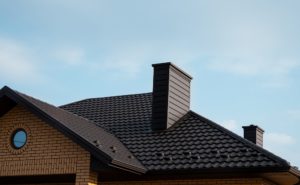 Think it might be time for a new roof? Have you noticed roof deterioration that might leave the structure of your home susceptible to weather-related damage? While a number of roof issues are easily repaired by a qualified roofing contractor, certain problems almost always necessitate a complete roof replacement.
Think it might be time for a new roof? Have you noticed roof deterioration that might leave the structure of your home susceptible to weather-related damage? While a number of roof issues are easily repaired by a qualified roofing contractor, certain problems almost always necessitate a complete roof replacement.
However, if you’re not trained to identify potentially damaging issues, it can be difficult to determine whether you need a few simple repairs or a full-blown roof replacement. At Bert Roofing, we understand many homeowners aren’t aware of the signs that indicate the need for a new roof. To help you better protect your home and avoid expensive remediation costs, we’ve outlined five of the most common signs that your roof requires replacement.
1. Your Roof Has Exceeded Its Projected Lifespan
Every roof has a projected lifespan, which depends largely on the quality of the materials, the integrity of the installation, and the surrounding climate. And when a roof exceeds its lifespan, it’s more vulnerable to weather-related damage and deterioration. As a result, it may not provide the level of protection the structure of your home requires, which can potentially lead to expensive remediation costs in the event of severe weather.
If you know when your existing roof was installed, it’s important to replace it according to the manufacturer’s projected timeline to properly protect your home. Average lifespans for some of the most frequently installed roofing materials described below:
- Asphalt shingles. On average, asphalt roofs last around 15-20 years, regardless of climate conditions.
- Metal roofing. Depending on the quality of the metal and the integrity of the installation, most metal roofs last approximately 40-70 years.
- Cedar shakes and shingles. In most climates, cedar roofing has a projected lifespan of about 30 years.
- Slate or synthetic slate. Both slate and synthetic slate can last upward of 100 years with proper maintenance.
If you know your roof is approaching the end of its usable lifespan, schedule an inspection with a qualified roofing company to determine how much time it has left. A little preventative action goes a long way toward protecting the structure of your home.
2. Missing or Damaged Shingles
Patches of missing or damaged shingles often indicate the need for a new roof; however, that’s not always the case. If your roof is relatively new, meaning it hasn’t yet reached 15-20 years old, there’s a good chance roof repairs rather than a full replacement can remedy shingle damage. That said, only a qualified roofing contractor can make that call after performing a thorough roof inspection.
Keep an eye out for shingle granules in your gutters and cracked, splitting, curling, or missing shingles. As soon as you notice these types of damage, either conduct a visual roof inspection yourself or contact a professional if you’re unfamiliar with what to look for.
3. Visible Rot and Mold
If you can see your roof is visibly sagging, you definitely need a new roof. A sagging roof not only presents a safety hazard to anyone living in your home, but it can also present a potential health hazard in the form of mold and rot exposure. If your roof has reached this point, contact a licensed roofing company immediately. You cannot afford to let a sagging roof sit.
In many cases, though, mold and rot aren’t easy to detect from the outside of your home. That’s because mold problems typically crop up on the interior of the roof first — inside the attic. If you’re worried your roof might have a mold problem that could necessitate a full-blown roof replacement, take a few minutes to inspect your attic for signs of water damage. If you can see moldy areas, mildew, or water stains, schedule a roof inspection at your earliest convenience.
4. An Excessive Amount of Organic Growths
Does your roof look like a terrarium? Can you see substantial amounts of moss or other organic growths on your shingles? If so, you may need a roof replacement, but that’s not always the case.
In humid, shady areas, roofs are more prone to developing organic growths, but if they’re promptly removed, they typically don’t present a threat to the structure of your roof. However, if you’ve allowed moss or lichen to sit on your roof for extended periods, you may have a problem on your hands.
Because these plants require moisture to thrive, they hold water against your shingles. And if that moisture sits there long enough, it can penetrate the structure of your roof and lead to mold and mildew development. To avoid this damage, you should thoroughly clean the roof and remove any organic growths you can safely reach. It’s also a good idea to contact a roofing company for an inspection to determine whether your roof has developed any moisture damage.
5. Deteriorated Flashings or Other Roof Components
Your roof features thin strips of metal called flashings, which function to seal roof seams and prevent moisture intrusion. But when those flashings sustain damage or deteriorate over time, they cannot properly protect the structure of the roof from water, which can result in extensive damage. Some older homes may even feature flashings constructed from roof cement or tar, materials even more prone to deterioration than metal.
While you may not be able to observe flashing damage from the ground, if you’re comfortable with heights, you can climb up on your roof and take a look around. If you notice any damaged roofing components, including deteriorated eaves, vent pipes, ridge caps, ridge vents, sheathing, or underlay, you may need a new roof. Contact a licensed roofing contractor for a full inspection and advice on your best course of action.
Need a New Roof? Contact Bert Roofing Today
If you’re in the market for a new roof or need a roof inspection to determine how much life your roof has left, get in touch with our team at Bert Roofing. We specialize in performing comprehensive roof repairs, replacements, and new installations, and we’ve proudly completed over 32,000 projects throughout the Dallas metro area. To learn more about our products and services or schedule an appointment, contact our office today at (214) 321-9641, or send us a message online, and we’ll be in touch.
